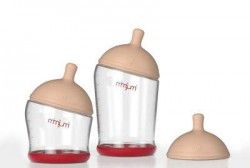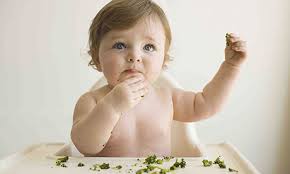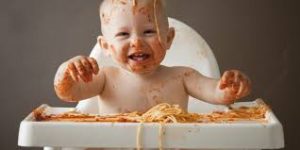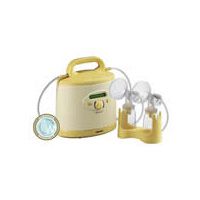Recent Comments
No comments to show.
Posted by admin in Babies 0-6 months, Breastfeeding, General on June 19th, 2014
Yep you read it right. The winner of this comp will pay just $1 for a Mimijumi Very Hungry baby bottle.
Mothers, Nurses, Doctors, Lactation Experts and Industrial Designers have come together to create the perfect feeding bottle.
With natural colours, textures and forms, the Mimijumi Very Hungry feeding bottle provides the perfect complement to breastfeeding and the best possible transition to bottle feeding. The innovative nipple design on the Mimijumi Very Hungry feeding bottle replicates a mother’s breast, creating the most natural feeding and latching experience for a happier and healthier bottle fed baby. Functioning like a breast, the non-free-flow nipple design means your baby has to actually latch onto the nipple and suck in order to produce the milk. These elements combined replicates breastfeeding and provides the most natural bottle feeding experience possible.
The Very Hungry feeding bottle is easy to open and clean, and is top rack dishwasher safe. Our unique integrated venting system means it is anti-colic and anti gas, and our bottles have a skid-free base for those hard one-handed refills. The Very Hungry mimijumi feeding bottle and parts are produced in Austria with the highest quality standards to protect your baby, and all bottles are BPA Free, Latex Free, EA Free, totally toxin free and exceed all Australian safety standards. The Very Hungry feeding bottle is the Next Breast Thing.
All bottles come standard with a Flow Rate 1 Nipple.
Comment on our post telling us in 20 words or less why you’d like to win the Mimijumi Very Hungry Baby Bottle and like our page on Facebook and you’re done.
Winner will be chosen at random and notified via our Blog and Facebook Page.
https://www.facebook.com/Rockabyebabyequipmenthire
a Rafflecopter giveaway
Posted by admin in Babies 0-6 months, Babies 6 months - 4 years, Breastfeeding, General, How to on May 15th, 2014

We’re really excited to have been accepted as a stockist of the MIMIJUMI BABY BOTTLES.
Developed by a comprehensive team of Mothers, Nurses, Doctors, Lactation Experts and Industrial Designers finally its here – the perfect baby bottle. With natural colours, textures and forms, Mimijumi baby bottles provide the perfect complement to breastfeeding and the best possible transition to bottle feeding. The innovative nipple design on Mimijumi baby bottles replicate a mother’s breast all the way down to pores on the skin, creating the most natural feeding and latching experience for a happier and healthier bottle fed baby.Functioning like a breast, the non-free-flow nipple design means your baby has to actually latch onto the nipple and suckle in order to produce the milk, just like they do at the breast. These elements combined replicate the breastfeeding experience and provide the most natural bottle feeding experience possible.
Mimijumi baby bottles are easy to open and clean, and are top rack dishwasher safe. Our unique integrated venting system means it is anti-colic and anti gas, and our bottles have a skid-free base for those hard one-handed refills. All Mimijumi baby bottles and parts are produced in Austria with the highest quality standards to protect your baby, and all bottles and parts are BPA Free, Latex Free, EA Free, totally toxin free and exceed all Australian safety standards. Coming in 2 sizes, The Very Hungry Baby Bottle and Not So Hungry Baby Bottle, Mimijumi baby bottles are the Next Breast Thing.
Posted by admin in Babies 6 months - 4 years, Breastfeeding, How to on April 7th, 2014

Starting your baby on solids is fun, interesting, sometimes frustrating, sometimes challenging but pretty much always messy!
Current recommendations are to start solids some time after your baby turns 6 months old. Prior to this, the baby’s digestive system is just unable to cope with other foods and their kidneys cannot process salt well. Research suggests that babies who start solids after 6 months are less likely to be intolerant or develop allergies to foods and are less likely to develop obesity and its related health concerns later in life.
Sometimes it is tempting to begin solids in the belief that this may assist your baby in sleeping through the night. It has been researched and found that babies will not automatically sleep for longer periods after being given solids (or formula for that matter).
Babies have a natural tongue-thrust reflex that means their tongue will push out against anything going in. This does disappear by about 6 months of age, enabling babies to accept and swallow solid foods.
Trying to take food from you, chewing on everything she gets her hands on, staring while you eat or appearing unsatisfied after feeds aren’t necessarily signs that your baby is ready for solids. These are all natural, developmentally appropriate behaviours that aren’t particularly related to food.
If your baby is over 6 months and does appear to be unsatisfied, even after days and nights of more frequent feedings, you may like to start considering adding solids to her diet.

Always offer the breast before solids, thus ensuring that she is getting her most important food. This will also help to avoid decreasing your supply. If you do find this is the case, you can just offer more breast, less solids for a few days to boost your supply again. Start with one “meal” per day and you can gradually build from there.
This can get pretty messy so you may like to choose where you feed wisely – if you’re not keen on scrubbing floors, its a good idea to lay down some newspaper or a plastic tablecloth to catch the inevitable spills and dribbles that will occur.
Introduce one food at a time, and space the introduction of new foods to be able to isolate reactions if they occur.
Some babies prefer to feed themselves and can be given their own spoon or if they prefer offer them finger foods they can hang onto and eat themselves.
You may at this time like to start offering a small drink of water to your baby with these meals. If your baby is still able to have as many breastfeeds as she wants, she will get sufficient fluid from your breastmilk so don’t worry if she’s not interested in water at this point.
For some babies it can be a quick transition, others are slower to taking any real interest in solids. Take your time, be guided by your baby and her appetite and try and avoid letting food become a battle.
Bon appetit!
Posted by admin in Breastfeeding, General, How to on November 14th, 2013

I just had a lovely customer who has hired a Medela Symphony to express breastmilk at home call and ask how to clean her kit. So I explained it all on the phone and though to myself – I should probably do a factsheet so that other customers can print it out and have a read of it when they want to clean their kits too. So here’s how.
Cleaning your kit properly is very important to maintain the health and hygiene of your milk and to keep baby safe.
When you first get your kit you must clean the kit before you use it. It is sterile but its always safer to give it a good clean first.
Please note – word to the wise here – your kit isn’t dishwasher safe and the dishwasher isn’t clean enough so handwashing is a necessity.